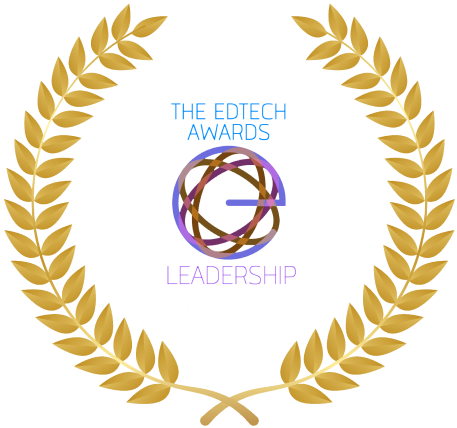“Very easy to use platform, that shows more realistic environments that we will be facing in the workplace (meetings where people disagree and agree). I enjoyed it, and it was good to have different perspectives and be able to share arguments in an organized way.”
Get students
Engage every student with Breakout Learning’s award-winning platform for AI-evaluated discussions.
Get students
Engage every student with Breakout Learning’s award-winning platform for AI-evaluated discussions.
Breakout Learning is trusted by 225+ institutions.





































Students aren’t engaging with your course materials.
Traditional textbooks sit unread. Discussion boards aren’t cutting it. Coursepacks get skimmed at best.
To get students engaged, get them talking, with Breakout Learning.
Breakout’s student engagement platform is designed to spark active learning.
No more “read and respond” assignments. No more free-riders or steamrollers in small group work.
Instead, students meet on the platform where customized discussion modules steer the conversation.
You control the topics, grading weight, & prompts.
Our team can create multimedia course content, activity types, learning objectives, and design the entire experience for you.
It all integrates seamlessly with your LMS.
The platform produces a transcript of the conversation.
The transcript is evaluated by our patented AI-powered system against rubrics tailored to your learning objectives.
The rubrics measure participation, critical thinking, and understanding of your concepts.
Students get immediate feedback. Instructors get robust metrics that tell them exactly where each student is.
90% of students who use Breakout Learning modules complete their assigned reading prior to the session.
Ways To Use Breakout
Looking for an easy way to get started? Build a coursepack with content that works for you.
There are 100+ ready-to-use discussion modules created by Breakout Learning’s community of professor partners.
Work with Breakout Learning’s instructional design team to replace a textbook or create an entire course centered around student discussions.
Breakout Learning’s NextBook™ is perfect for curriculum design in undergraduate large lecture formats.

What They Say
Students
“I was surprised by how much I enjoyed this process and how this led to engagement within the group.”
Student
Johns Hopkins University
Operations Management
“Absolutely loved this format. It was an excellent time. The content was extremely thorough and inspired deep conversations about marketing and ethics within the modern world.”
Student
BYU
Marketing Management
“Really interesting way to capture students’ views and incite critical conversations without it feeling like an assignment. Never done anything like it before.”
Student
University of Connecticut
Management and Entrepreneurship
“It was lit”
Student
Lipscomb University
Microeconomics
Instructors
“Students aren’t lazy. They’re emotionally intelligent, kind, and conflict-avoidant – they’re terrified of sharing their perspective in a room of 600… Breakout Learning tools give them the structure and psychological safety to do that.”

Rebecca Sullivan
Instructor, Dept. of Marketing
Eli Broad College of Business – Michigan State University
“We have to stop designing assignments that AI can ace. That’s the real shift. Breakout lets us create moments where students have to think in the moment – not outsource it, not regurgitate it, but own it.”

Tawnya Means
Assistant Dean for Educational Innovation
Gies College of Business – University of Illinois
“The professor isn’t replaced by AI; instead, AI tackles the repetitive tasks, freeing up time for professors to guide students through critical thinking and problem-solving.”

Mahadeo Jaiswal
Founding Director
Indian Institute of Management Sambalpur
“One of the great things about using Breakout is that you end up with a classroom full of prepared, engaged students who take the case discussion to the next level.”

Myles Shaver
Lecturer and Faculty Advisor
Carlson School of Management – University of Minnesota
“I can’t sit there and listen to 40 students for 30 minutes. And the AI can. So it relieves me from having to try to do that.”

Peter Simonson
Asst. Professor, Marketing & Supply Chain Management
Mitchell College of Business – University of South Alabama
“My students prefer Breakout Learning to traditional business school case studies. They come to class more engaged and with deeper comprehension of the topics and concepts presented in the cases.”

Daniel Nathanson
Lecturer and Faculty Advisor
Anderson School of Management – UCLA

Awards
Recognized for Shaping the Future of Education Technology
We are deeply honored to be recognized as leaders in the evolving EdTech industry. We remain committed to ongoing innovation, dedication to excellence, and meeting the changing needs of educators and learners worldwide.



FAQ
- Does Breakout work for asynchronous courses?
- Yes. While the platform is designed for a synchronous experience, it also allows students to go through the experience individually.
- Is Breakout designed for solo or group work?
- The platform is designed for group work, but an individual can go through the experience alone.
- How are assessments designed? Who developed them?
- Breakout combines AI-powered analysis with professor-defined criteria. The AI evaluates discussions using Bloom’s Taxonomy, while professors determine how participation, comprehension, and AI Evaluation contribute to grading. The assessment, learning objectives, and rubrics are designed by an academic author in collaboration with Breakout staff.
- Does the Breakout software work with my LMS?
- Our platform connects with Canvas via secure, real-time API integrations. It enables professors to create and manage assignments with the same functionality found in the primary Breakout platform. Gradebook sync is also provided from the platform to Canvas.
- Does Breakout’s platform meet privacy and accessibility standards?
- Our platform meets rigorous security and accessibility standards, including but not limited to GDPR, FERPA, SOC 2, and WCAG. Please refer to our full privacy policy and other IT security information for additional details.
